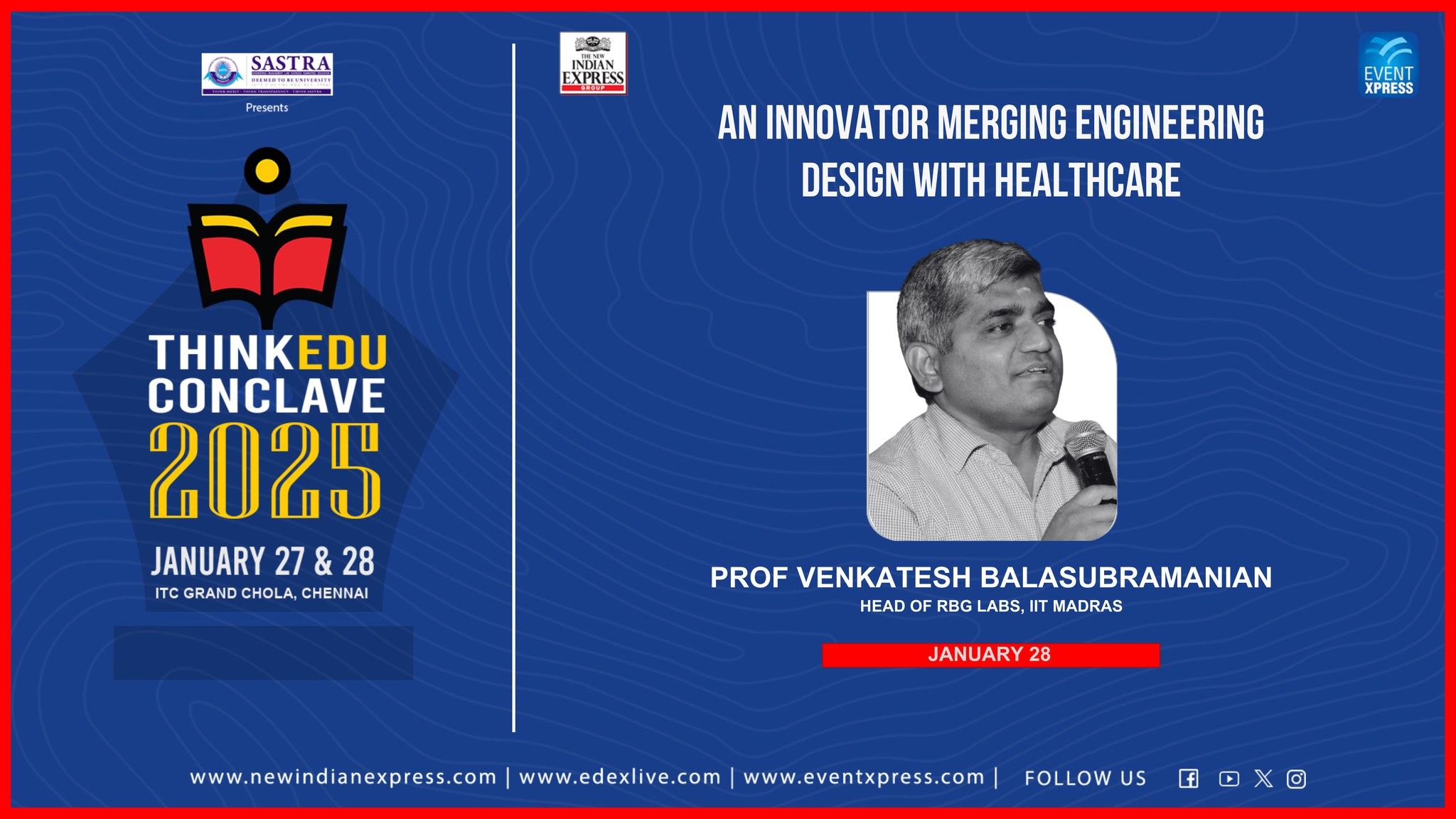
- This event has passed.
Professor Venkatesh Balasubramanian at the TNIE ThinkEdu Conclave 2025
January 28 @ 8:00 am - 5:00 pm

Artificial intelligence (AI) remained a central theme on the second day of the ThinkEdu Conclave 2025, presented by SASTRA University, as Professor Venkatesh Balasubramanian, Head of the Rehabilitation Bioengineering Group (RGB) Labs at the Indian Institute of Technology Madras (IIT-Madras), delivered a compelling presentation on the potential of AI-driven data and predictive models to shape and influence human behavior.
During his session, “AI and Behavioral Change: A Roadmap,” held on January 28th, Professor Balasubramanian shared insights into his work with the Union Ministry of Road Transport and Highways (MoRTH) through his think tank, the Centre of Excellence for Road Safety (CoRS). He emphasized the ability to track and modify human behavior patterns by analyzing data related to the consequences of those actions.
In a conversation with senior journalist Kaveree Bamzai, he explained that the Centre’s data analytics model contributed to a significant reduction in road accidents in Tamil Nadu, with only two fatalities reported last year. Professor Balasubramanian detailed the model’s analytical process, explaining that it identified a recurring spike in road fatalities on the nights of December 31st each year in Tamil Nadu. Further analysis revealed that these accidents frequently occurred at junctions where high-speed roads intersected with low-speed roads, and that the predominant demographic involved was young males.
He noted that these insights enabled municipal administrations to enhance traffic monitoring and vigilance at these identified junctions. However, Professor Balasubramanian cautioned that even with compelling data, changing human behavior can be a complex undertaking. He illustrated this point by stating, “For example, the fact that head injuries can be fatal is undeniable. Yet, this still does not encourage some riders to wear helmets.”
Professor Balasubramanian asserted that while AI models can effectively map and predict human behavior, the real challenge lies in actually modifying it. He further discussed the various obstacles in developing functional AI models, highlighting the scarcity of reliable data as a primary concern. He also pointed out that data is often vulnerable to biases and affiliations of its sources, which can lead to skewed and inaccurate results, ultimately hindering the model’s effectiveness.
- Professor Venaktesh Balasubramanian at the TNIE ThinkEdu Conclave 2025
- Professor Venaktesh Balasubramanian at the TNIE ThinkEdu Conclave 2025


